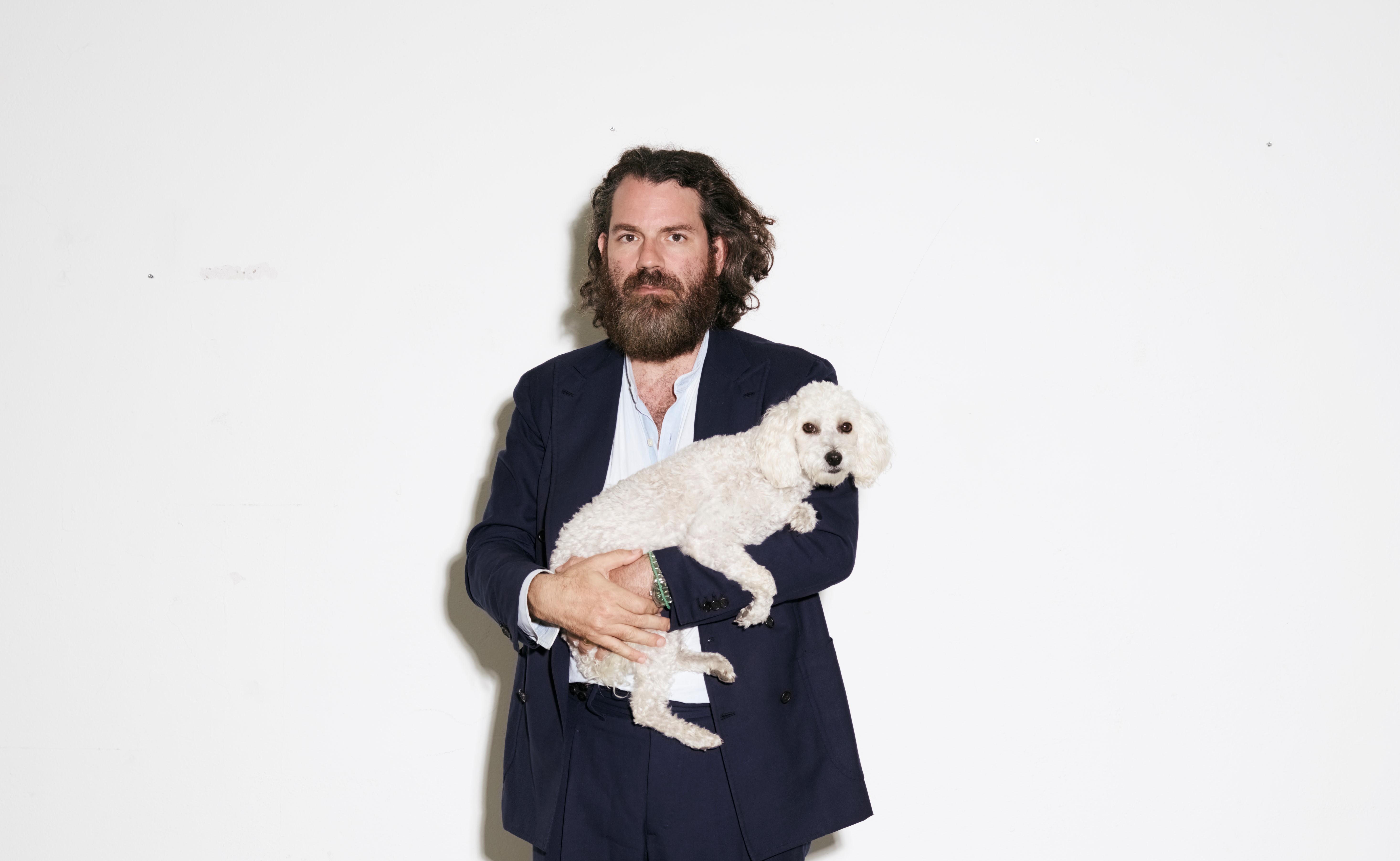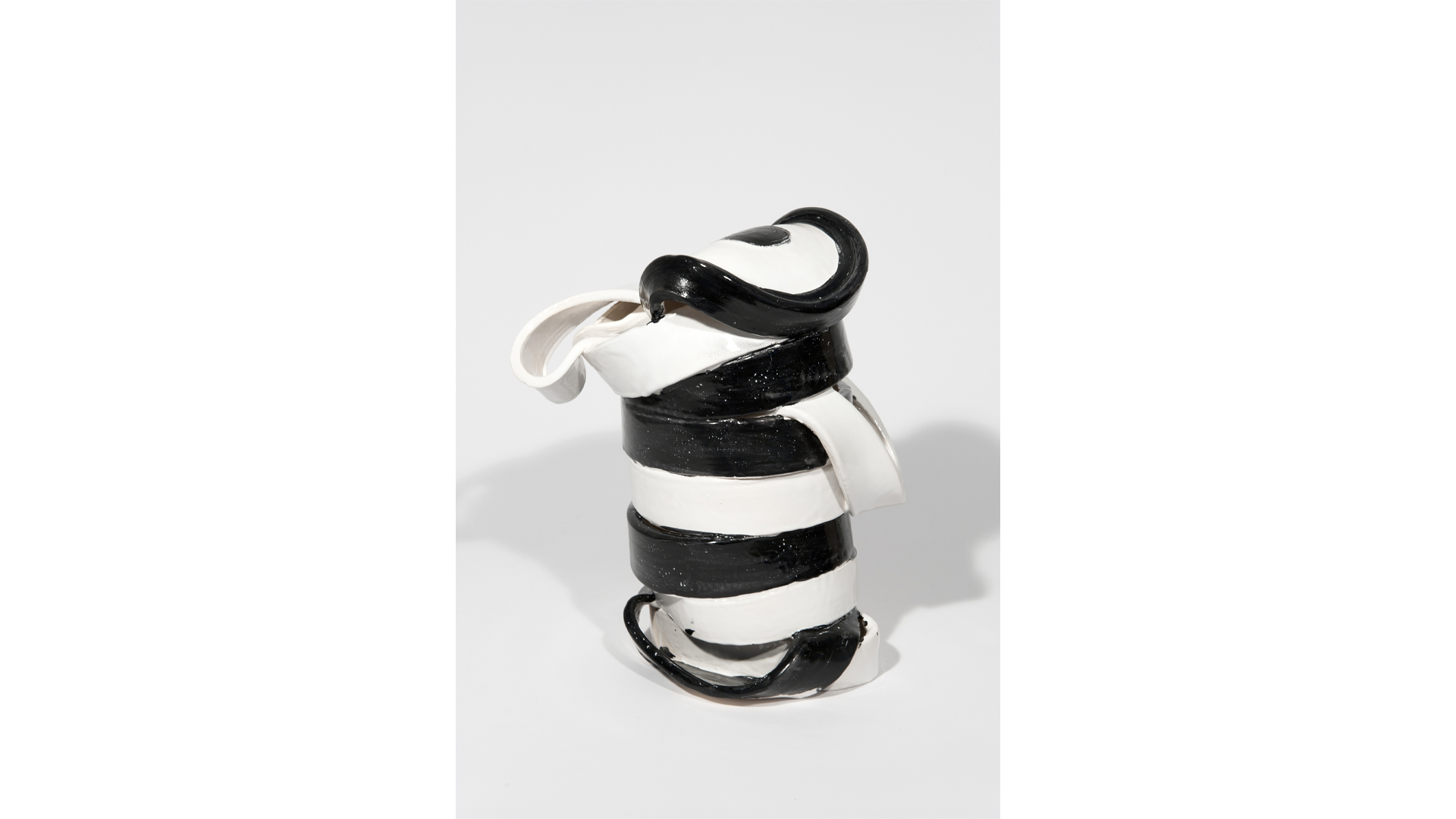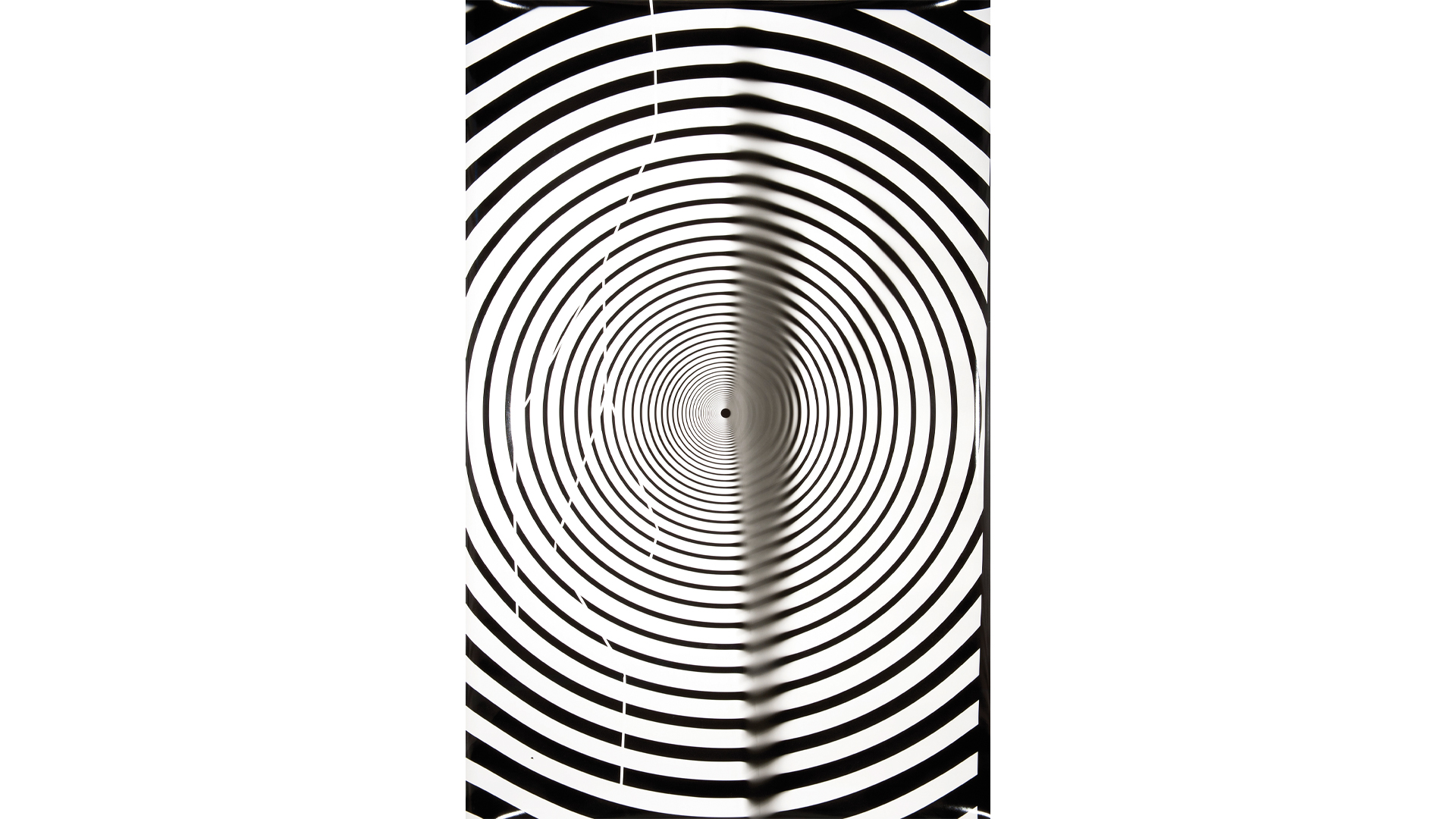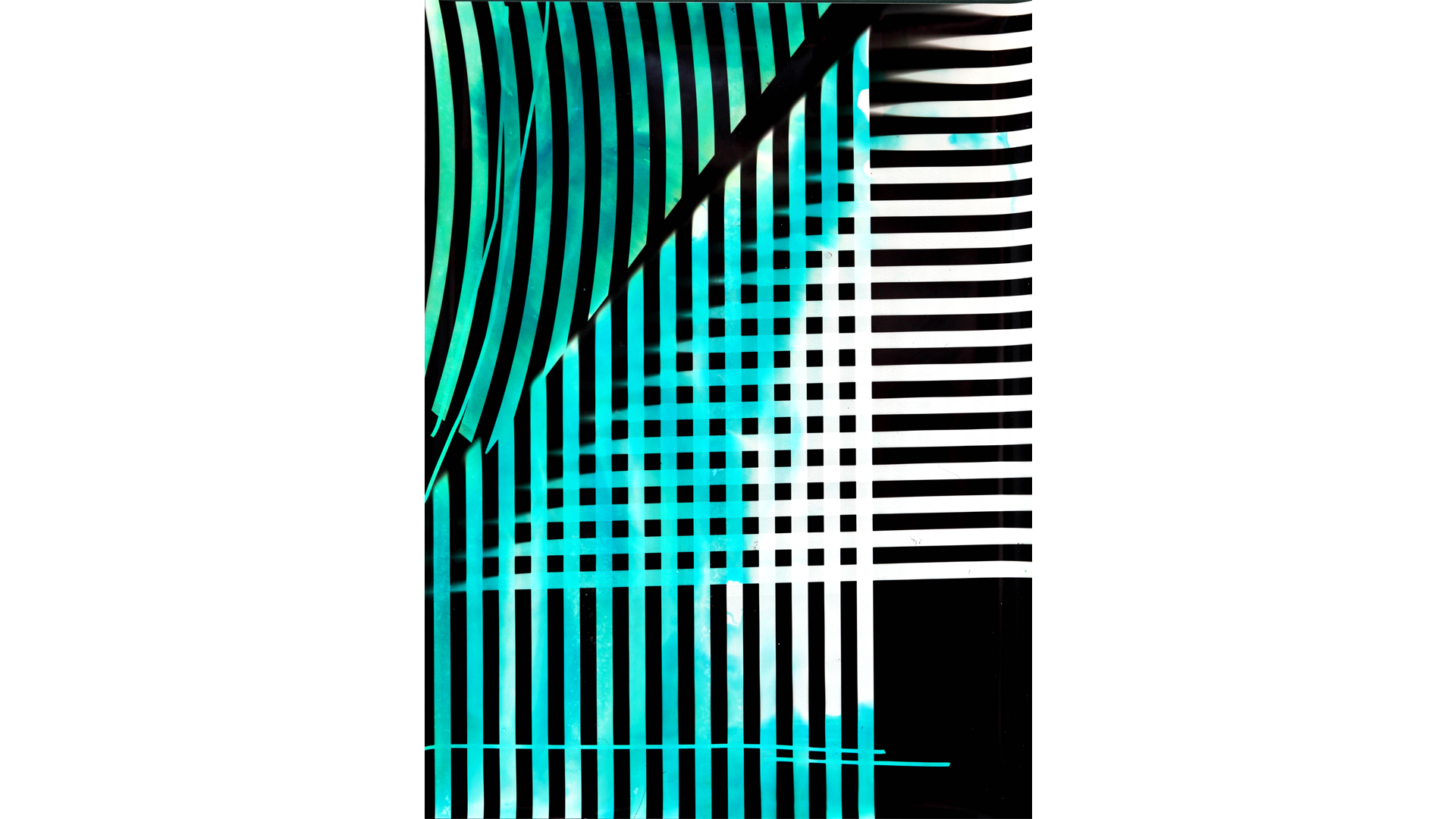Fabian Marti: The Poodle and the Octopus

For the next three years, Julius Baer is the Lead Partner of Zurich Art Weekend. The event bundles the energies of the city’s vivid art scene and brings together museums, art collections, galleries, and off-spaces for a long weekend before Art Basel in early June. One of the artists exhibiting during Zurich Art Weekend is Fabian Marti, a key figure of the Swiss art scene for the last 15 years. In a two-person show with fellow artist Pentti Monkkonen, Marti will present new works at the art space of Acrush.
Fabian Marti is someone who brings people together. The Swiss artist is deeply interested in collaboration, exchange systems, and what happens if you (at least partly) give up control. This interest can take on many forms, from co-running an art space like Hacienda in Zurich, which Marti for a few years co-directed with Oskar Weiss and Arthur Fink, to directly integrating the collaborative aspect and forms of exchange into his work. For his so-called ‘TwoHOTEL’, Marti even built an artist guesthouse on a beach in Bahia, Brazil, in 2013.
Since then, an exact copy of this makeshift wooden structure, which is part of the collection of the Migros Museum für Gegenwartskunst in Zurich, has been exhibited several times, amongst others at Centre d’art Pasquart in Biel, at the Basel institution der TANK or the Museum Rietberg in Zurich. To get the project running, the artist – who studied at Hochschule für Gestaltung und Kunst in Zurich and then subsequently attended Mountain Art School in Los Angeles, an alternative artist-run art school built on community-based education – gifted an artwork to other artists in return for one of their works. He then exhibited these pieces in the structure, filling the house with friends. Marti’s own artworks – ceramic sculptures made of staked rings – thus functioned as a token, almost like a currency creating the bond between him and the other artists involved.
‘These sculptures, which I made for quite a while, could take on various functions in different settings’, Marti says when I reach him in Los Angeles, where he has spent quite some time during the last decade. ‘They are containers that can be used to project things onto and into it.’ Works from this series – out of which two, ‘Untitled’ from 2011 and ‘Capsule (All is All)’ from 2014, are part of the Julius Baer Art Collection – for example also featured in Marti’s large-scale multimedia installation ‘The Summit of It’ at the Venice Biennale 2011. Here, they took on a different meaning, coming across as ‘communicating vessels connected with lines’, as the artist recalls. Indeed, Marti’s work may often seem opaque and not easy to grasp when experienced alone, but then almost naturally gain a specific yet changeable meaning when seen in context. Concrete value is added by the actual situation and all the relations involved.
 Fabian Marti (b. 1979), ‘Untitled’, 2011, glazed, fired clay, 32 x 28 x 20.5 cm, courtesy the artist and Julius Baer Art Collection
Fabian Marti (b. 1979), ‘Untitled’, 2011, glazed, fired clay, 32 x 28 x 20.5 cm, courtesy the artist and Julius Baer Art Collection
 Fabian Marti (b. 1979), ‘Capsule (All is All)’, 2014, textile, casted in polyester, 43 x 34 x 31 cm, courtesy the artist and Julius Baer Art Collection
Fabian Marti (b. 1979), ‘Capsule (All is All)’, 2014, textile, casted in polyester, 43 x 34 x 31 cm, courtesy the artist and Julius Baer Art Collection
The show at Acrush during Zurich Art Weekend, too, has been developed in close collaboration with another artist, Pentti Monkkonen, who is based in Venice, California. For the two-person exhibition called ‘Maison de Poupée’ (Puppet House), the friends joined forces to develop an arrangement that closely intertwines both of their works. The result feels like the eponymous puppet house blown up to a real-life size. Whereas Monkkonen has developed chair-like sculptures based on the wire and metal lid holding the cork on the champagne bottle as well as tables from scaled-up matchboxes, Marti contributes a series of paintings, each showing an octopus and a poodle playing together. The square-format paintings come in jagged floater frames by Monkkonen giving Marti’s works the appeal of gigantic stamps. In the press release, Monkkonen links their show back to Daniel Spoerri’s ‘Snare Pictures’ from the 1960s, for which the Swiss artist fixed the remnants of dinner tables in huge tableaux, or the ‘mail art’ of Spoerri’s Fluxus peers – art that, once again, evolves around being together, communication and exchange.
For his contribution Marti collaborated with yet another agent: ‘I made these paintings with the help of large-language models and combined my ideas with the models’ capacities to develop the actual motifs’, he says. The artist even sees parallels between these models and his own practice. ‘Where they aggregate countless images online, I, too, often use existing material and ideas from the 20th century in my work.’ Indeed, Marti’s is an approach that is fully aware that making art always owes much to the work of others – may it be other artists, large language models, or even the own subconscious ‘other’ that finds is ways to the surface in various altered states of the self.
‘For years, I was very interested in the importance of altered states of consciousness for modern art in general and abstract art in particular’, Marti says. ‘It is a connection that often tends to be overlooked or even downplayed.’ For this strand of his work, he repeatedly turned towards 1960s counterculture with its specific mixture of Eastern philosophy, spiritualism and (often drug-induced) psychedelic experience. Many of his pieces feature round, all-encompassing forms symbolising unity or oneness and bear titles that hint into a similar direction.
Take two photograms of Marti from 2011 that are part of the Julius Baer Art Collection: First, ‘Cosmic Laughter IV’, a large-scale work more than two meters high. The piece’s almost op-art-like concentric circles, whirring to a dizzying effect, are reminiscent of the abstract tendencies of 1960s art as much as of the era’s psychedelic graphic design. The other work, abstract as well, but this time smaller, bears a blunt title that directly indicates the use of psycho-active substances for creative means – ‘Experimental Intoxication’.
 Fabian Marti (b. 1979), ‘Cosmic Laughter IV’, 2011, photogram, silver gelatin print, 215 x 145 cm, courtesy the artist and Julius Baer Art Collection
Fabian Marti (b. 1979), ‘Cosmic Laughter IV’, 2011, photogram, silver gelatin print, 215 x 145 cm, courtesy the artist and Julius Baer Art Collection
 Fabian Marti (b. 1979), ‘Experimental Intoxication’, 2011, photogram, Indian ink on silver gelatin print, 138 x 108 cm, courtesy the artist and Julius Baer Art Collection
Fabian Marti (b. 1979), ‘Experimental Intoxication’, 2011, photogram, Indian ink on silver gelatin print, 138 x 108 cm, courtesy the artist and Julius Baer Art Collection
‘After a while, though, other things became more interesting for me’, Marti says. ‘At some point, my dog Lutz, a poodle, turned into a muse of sorts. She ended up featuring in several artworks.’ It is the very dog that now returns on the paintings at Acrush, happily playing along with another animal that features prominently in Marti’s recent work, the octopus. ‘Octopuses are fascinating creatures’, the artist says, ‘utterly alien, but incredibly smart – a form of life that has almost nothing to do with us.’
The combination of these two radically different animals – the epitome of a cultivated, groomed socialite companion here, the wild, otherworldly, and lone super-brain there – could even be seen as a fittingly mutated spirit animal for the work of an artist like Marti: impossible to pin down and free-roaming; at the same time elegant and sleek, yet versatile, even trippy, profound and, at times, even somewhat quirky. Asked about what made him become an artist, Marti answers: ‘I ventured into the arts because, as an artist, you can still be accepted into society without having to play by its rules fully.’ In other words, it is about a particular form of freedom.
The attitude speaking from this understanding of art finds its complex embodiment in a relatively small, somewhat ‘dandyish’ work at the heart of the exhibition at Acrush: a 19th-style walking stick. Its knob is made after an early Picasso sculpture from 1905 that Marti has scanned with his iPhone in the museum to create a 3D template. The title of the original sculpture is ‘Le Fou’, the jester, the joker – a free spirit, allowed, unlike the others, to speak the truth to the king, but only in the form of jokes and entertainment. Like a joker, an artist has similar freedom due to their social position. It is an idea of freedom that knows very well about the constraints of society and the systems we live in; individual freedom, indeed, but one that always finds – and welcomes – the other(s) at the heart of the self.
‘Maison de Poupée’, Fabian Marti + Pentii Monkkonen at Acrush, SBB Werkstätte, Hohlstrasse 400, 8048 Zurich
Opening: Friday, 7 June 2024, 6 – 10 p.m.
Author: Dominikus Müller